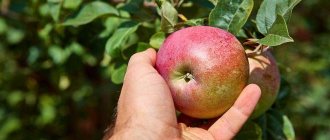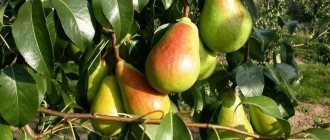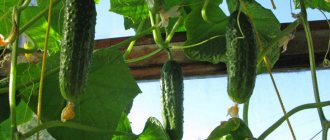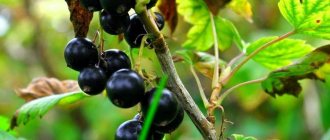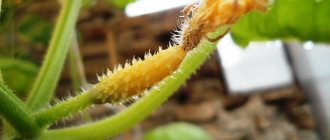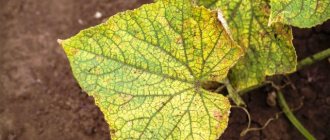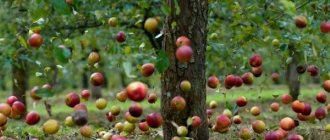Why there are no berries on gooseberries: reasons
There are many reasons why bushes do not bear fruit. If you do not diagnose the problem in time and do not begin to solve it, the plant will die. Therefore, gardeners regularly inspect their plantings and monitor the appearance of the plants.
Improper care
Despite the fact that gooseberries are an unpretentious crop, they require regular care. In the spring, agrotechnical measures are aimed at awakening the bush and stimulating the movement of sap inside the plant, in the summer - at the development of fruiting, in the fall - at protection from the upcoming cold.
Summer residents often neglect maintenance measures, which is why by the time of harvest there are no berries on the bush or very few of them.
The following agrotechnical errors lead to this phenomenon:
- Watering with cold water from open reservoirs. It may contain dangerous microorganisms that provoke the development of gooseberry diseases. Also, lack of harvest results from a lack of moisture over a long period of time.
- Lack of fertilizing. For abundant fruiting, the shrub needs regular and balanced fertilizers. These are mineral and organic, folk and purchased products. The plant especially requires microelements in spring and early summer - this directly affects the quality and quantity of berries.
- No trimming. If the plant is not pruned annually, this leads to diseases and the proliferation of insect pests. Such bushes are weakened, all the shoots are intertwined and grow in a chaotic manner.
- Neglect of loosening and removing weeds. These procedures improve oxygen metabolic processes, so that the root system is not subject to infection and rotting.
It is easy to diagnose a lack of watering or fertilizing - shoots stop growing, leaves dry out, and the plant becomes lethargic. The same thing happens if you don’t devote time to loosening, weeding and other agrotechnical procedures.
Old age of the bush
A bush is considered old if it bears fruit for more than 7-10 years. Sometimes plants are not pruned for 10-12 years. The shoots of such bushes are long, hard, and stick out in different directions. If there are no berries due to age, gardeners recommend thinning out the shoots, removing all non-fruit-bearing branches and rejuvenating the plant.
The procedure begins by cutting off broken, weak, insect-damaged branches. Short annual shoots are also cut out, leaving only the 3-5 strongest ones.
Rejuvenating pruning is carried out in early spring, after the start of sap flow. You cannot cut out the entire bush in one year; it will take 2-3 years. If everything is done correctly, after this time new berries will appear on the plant.
To improve fruiting, at the end of July or beginning of August, pinch the top of the gooseberry. The tips of annual shoots and weak tops are trimmed.
Incorrect landing
Gooseberry bushes are demanding on the lighting of the garden area, so it is recommended to grow the berry in a sunny place . Otherwise, the branches grow poorly and do not bear fruit, and the foliage takes on a gray-green tint.
Also, there should be no reservoirs or underground groundwater nearby. Gooseberries do not tolerate constant moisture. Because of this, the berries become smaller, and the plant often suffers from fungal diseases.
It is better to plant gooseberries in light and nutritious soil. The plant is planted in sandy loam soil with a neutral acidity level. The shrub does not tolerate heavy clay soils. If there is no other soil, when planting, purchase soil containing rotted organic matter (manure, bird droppings, peat) and dry wood ash is poured into the hole.
Attention! Suitable neighbors for gooseberries are pears, plums, and apples. The root systems of these crops are at different levels, so they do not harm each other. An unfavorable neighborhood is black currants, raspberries or strawberries.
Plant diseases
Gooseberry diseases occur due to improper care, thickening of plantings, and lack of preventive measures.
If gooseberries are not treated, you can not only lose the berries, but also lose the entire bush.
The main enemy of berries is powdery mildew. The fungus occurs in dark and damp places and prefers heavy soil.
White spots first appear on the leaves, which grow over time and turn brown. Already formed fruits also turn white.
Among the diseases summer residents note is anthracnose. Small brown spots appear on the leaves, they shimmer and shine in the sun.
Due to anthracnose, the leaves dry out and fall off, and the bush loses its ability to bear fruit. The causes of infection are the lack of potassium and phosphorus in the soil, unfavorable proximity, excess or lack of moisture.
Gooseberries also lose their harvest due to rust. Orange-brown swollen spots appear on the leaves, which become larger over time. If treatment is not started, the leaves will fall off en masse. It is impossible to bring such a plant back to life.
Rust primarily affects young and weakened bushes.
Landing rules violated
One of the main reasons for the lack of berries on a gooseberry bush. When planting this plant, you need to follow several important rules:
1. You need to choose a sunny place for planting, since gooseberries do not like shade, even partial. Therefore, do not plant it under fences or large trees that will block the light with their crown.
Gooseberries also do not like draft winds and stagnant water. It follows from this that there is no need to plant the bush in open, heavily blown areas and in lowlands, where water can accumulate in spring and autumn.
2. The soil for planting must be neutral or slightly acidic. In acidic soils, the plant's root system does not develop well.
3. When planting gooseberries, you need to dig a hole no deeper than 50 cm, since in deep holes the trunk of the bush does not grow well, and side shoots do not form.
4. When planting, maintain a distance between seedlings. It should be at least 1.3-1.5 m between each bush. Close planting will prevent the plant from developing. The bushes will compete for light, water and nutrients.
What to do if gooseberries do not bear fruit
After identifying the causes of poor yields, gardeners begin to take decisive action.
Simple and effective recommendations will help increase productivity and restore the health of the bush, as well as cope with the situation in which the gooseberries become smaller or fattened.
Watering and fertilizing
If gooseberries do not bear fruit due to lack of moisture, summer residents moisten the plant . About 4 buckets of water are spent on an adult bush, 2-3 on a young bush . Watering depth is about 40-50 cm. The root system is located at this distance.
Moisten the plant early in the morning or in the evening after sunset. Before the procedure, loosen the soil 10 cm in diameter from the base of the bush and remove weeds. After watering, the soil is mulched with sawdust or leaves. They retain moisture and increase the time it takes for water to evaporate from the surface of the earth.
Attention! Once a week, summer residents pay attention to sprinkling. Water is sprinkled in drops over the plant. Sprinkling is especially necessary for shrubs that grow in hot and sunny regions.
Fertilize gooseberries three times per season . At the beginning of April, organic fertilizers are applied - a solution of ash or rotted manure. The fertilizer is poured into holes prepared in advance with a depth of 10 cm. During the period when the gooseberries begin to bloom, potassium sulfate or double superphosphate is added.
The last time the plant is fertilized is in August - sprayed with a soap-garlic solution. 150 g of chopped garlic is poured into 10 liters of water, left for 3 days and filtered. Then add 50 g of grated laundry soap and dilute with water in a ratio of 1:10.
Proper pruning and rejuvenation
If the gooseberries are overgrown, rejuvenating and formative pruning is carried out . Gardeners shorten perennial (skeletal) branches by half and trim off all root shoots. Use sharp pruning shears or scissors, and treat the cut areas with garden varnish. When pruning, gloves are worn to protect against thorns.
Starting from the 4th year, all dry and weak branches are cut out - they do not allow the fruits to develop and take away some of the nutrients.
To keep the crown well-groomed and neat, it is recommended to prune once a year in spring, summer or autumn, depending on the variety, growing region and characteristics of the plant. Pruning not only guarantees a rich harvest, but also protects against diseases and pests.
Shelter for the winter
If the gooseberries are not covered for the winter, they will freeze. For protection, gardeners form a cushion of loose soil by placing soil around the base of the plant. The ground is watered with a solution of potassium permanganate, cleaned of bindweed and other weeds, and fallen leaves are removed. The plant is mulched with peat or humus in a layer of no more than 10 cm.
If there is snow, the gooseberries are sprinkled with a snow cushion. If there is little precipitation, use a special covering material, for example, agrospan. It reliably protects from winds and frosts, while being breathable.
Agrospan is removed in the spring, as soon as the first snow melts. If you haven’t had time to cover the gooseberries, and frost has already set in, moisten the water under the bush with water.
Attention! Ordinary film will also save gooseberries from harsh cold weather. The main thing is to put it away during the day and use it for shelter only at night. Otherwise, the gooseberries will be blocked, which will lead to the development of diseases.
Treatment and prevention of diseases and pests
A classic method of preventing and treating diseases and pests is spraying with a solution of wood ash. For preparation, 3 liters of water and 1 kg of dry ash are required. The product copes with anthracnose, aphids, and powdery mildew. Treat the shrub in the morning before sunrise. Also, the infusion is used once a month instead of water for irrigation. This prevents root diseases and strengthens the immune system.
Professional treatments are used against spider mites and rust - “Maxim”, “Oxychom”, “Aktellik”.
The preparations contain fast-acting and effective components and are environmentally friendly. However, when using them, it is important to follow safety rules - prepare goggles, gloves, and a respirator. A solution of soda will help prevent the occurrence of diseases - 5 g of baking soda is dissolved in 1 liter of water and used for watering.
Rules for applying fertilizing and fertilizers
To obtain a harvest, it is very important to properly apply nutritional components. The gooseberry feeding scheme is as follows:
- In spring, fertilization must be carried out in two stages. The first stage - before the buds open, organic fertilizers are applied. The second stage of feeding is carried out after the formation of inflorescences - mineral fertilizer is used.
- In summer, phosphorus and potassium fertilizers are applied.
- Autumn fertilizing is carried out after the leaves fall. Humus or compost is used as fertilizer.
If necessary, complex fertilizers can be used, which are most often applied in the summer.
Important. Autumn fertilizer is necessary, as the plant is saturated with nutritional components and lays buds for the future harvest.



